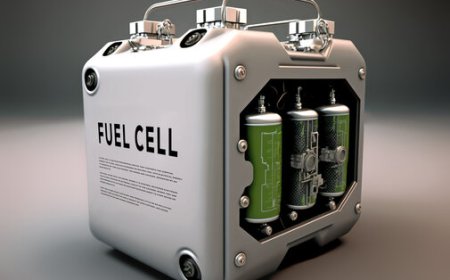Are Your Confined Space Rescue Procedures Ready to Save Lives?

Entering a confined space is never a small matter. Whether its a tank, a silo, a sewer line, or a utility vault, these spaces can quickly turn deadly if something goes wrong. Toxic fumes, lack of oxygen, sudden flooding, or even a simple slip can create a life-threatening emergency in seconds. Thats why every workplace must have strong, tested, and clear confined space rescue procedures.
In fact, safety experts often trained through a safety officer courses stress how vital it is to prepare before sending anyone into these environments. If your rescue plan is missing or poorly thought out, it can cost lives. Lets dive into how you can build, maintain, and confidently rely on confined space rescue procedures that really work when you need them.
Why Confined Space Work Is So Dangerous
Picture this: a maintenance worker enters a tank to perform routine cleaning. Minutes later, he collapses from a lack of oxygen. Another worker sees him, rushes in to help, and is overcome as well. These tragic chain reactions happen far too often, and sadly, they keep repeating because people underestimate confined spaces.
Confined spaces, by nature, are places with limited ways in and out. That means if a hazard develops gas leak, fire, entrapment rescuing someone becomes extremely difficult. Its one of the reasons a workplace hazard risk assessment is crucial. Failing to plan a rescue in advance is a recipe for heartbreak.
How to Build a Robust Rescue Plan
A solid confined space rescue procedure should never be an afterthought. Heres a step-by-step guide to making sure yours can truly save lives:
1?? Identify the Hazards
First things first know what youre dealing with. Are there toxic fumes? Could the air become oxygen-deficient? Is there a risk of engulfment? Before anyone even thinks about entering, every potential hazard needs to be identified.
Talk to workers, check previous incidents, and use gas detectors. This is the foundation of any rescue plan because you cant rescue someone from a hazard you havent even recognized.
2?? Choose the Right Rescue Method
There are generally three types of rescue methods:
-
Self-rescue (the entrant gets out on their own after detecting a hazard)
-
Non-entry rescue (the rescuer uses tools to get the person out without entering the space)
-
Entry rescue (rescuers must go in to extract the victim)
If possible, always aim for self-rescue or non-entry rescue. Entry rescue puts more people at risk and without thorough training, it can make things worse.
3?? Train, Train, and Then Train Some More
Rescue procedures are useless if no one knows how to follow them. Workers and rescue team members must practice again and again. Many organizations turn to safety training programs to make sure their teams have the right skills. Think of it this way: would you feel safe flying in a plane if the pilot never practiced emergency landings? Of course not!
Regular drills build muscle memory, so in a real crisis, people react quickly and correctly. Its truly the difference between panic and a professional response.
4?? Equip Your Team Properly
No one should ever enter a confined space let alone attempt a rescue without the right gear. This might include:
-
Full-body harnesses
-
Tripods with winches
-
Atmospheric monitors
-
Emergency breathing apparatus
-
Personal protective equipment
These tools should be inspected regularly. Theres nothing worse than discovering your equipment fails when someones life is on the line.
5?? Set Up a Rescue Plan Thats Easy to Follow
Complex, jargon-filled rescue plans are dangerous. In a real emergency, no one has time to flip through pages of complicated text. Keep your procedure simple, clear, and actionable. Use checklists. Post diagrams where needed. Make sure everyone knows their role ahead of time.
An Unforgettable Rescue Story
Lets make this real with a true-to-life story.
A crew was working inside a water tank. Suddenly, one worker collapsed. The others panicked, shouting for help. Luckily, their company had drilled a non-entry rescue plan many times before. A trained attendant outside the tank immediately activated the retrieval system, winching the fallen worker to safety within minutes no second rescuer had to enter the hazard.
Thats the power of a tested rescue plan. Because they practiced, they avoided a second victim and saved a life.
Reviewing and Updating Your Rescue Procedures
A rescue plan should never gather dust. Confined spaces, equipment, and even your team members change over time. You should:
-
Review rescue procedures at least annually
-
Conduct a fresh risk assessment whenever work conditions change
-
Hold refresher training after any confined space incident
This keeps your plan realistic and ready. Complacency is a silent killer in confined space operations.
Legal and Ethical Responsibilities
You might be thinking: Do I really have to go through all this trouble?
Absolutely. Under workplace safety laws, employers are responsible for protecting their workers. If you fail to plan and someone is injured or dies there can be criminal consequences, costly fines, and, even worse, the knowledge you could have prevented a tragedy.
Ethically, theres no excuse. These are peoples lives. A rescue plan is not a luxury it is a moral duty.
Step-By-Step Rescue Procedure Example
Heres a simple framework you can adapt to your site:
-
Pre-entry
-
Identify hazards
-
Test the air
-
Ventilate if needed
-
Brief the rescue team
During entry
-
Maintain continuous air monitoring
-
Keep constant communication
-
Have the rescue team on standby
In an emergency
-
Activate the alarm
-
Attempt non-entry rescue first
-
Call emergency services
-
Proceed to entry rescue only if absolutely necessary, with proper equipment
Post-incident
-
Provide medical support
-
Report the incident
-
Review what went well and what needs improvement
By following these steps, youll give your people the best shot at survival if something goes wrong.
Investing in Your Teams Safety
Many organizations support their confined space program by sending workers to safety officer training. These programs teach not only confined space entry techniques but also broader hazard control, first aid, and emergency coordination skills. In a world where industrial accidents still claim thousands of lives every year, these skills are priceless.
If youre thinking of taking your teams preparedness to the next level, there are plenty of safety courses available that can help you build a confident, knowledgeable crew.
Your Peace of Mind Is Worth It
One of the biggest lessons in confined space safety is this: hope is not a strategy. Without tested procedures, people will panic and mistakes will multiply. Its painful to think about, but no rescue plan is far, far worse than a plan that is too simple.
Safety training programs can be the backbone of your confined space entry program. They empower your workers, help you meet the law, and most importantly protect the people who trust you with their lives every single day.
If you havent reviewed your confined space rescue procedures recently, dont wait. Put it on the calendar, involve your team, and make it a routine part of your workplace culture.
Final Thoughts
Confined spaces are a silent threat, but they dont have to be a death trap. With thoughtful planning, realistic drills, and a team that knows exactly what to do, you can protect lives even in the most dangerous workplaces.
Remember, rescue doesnt start when something goes wrong it starts today, with preparation, training, and the courage to take safety seriously






























